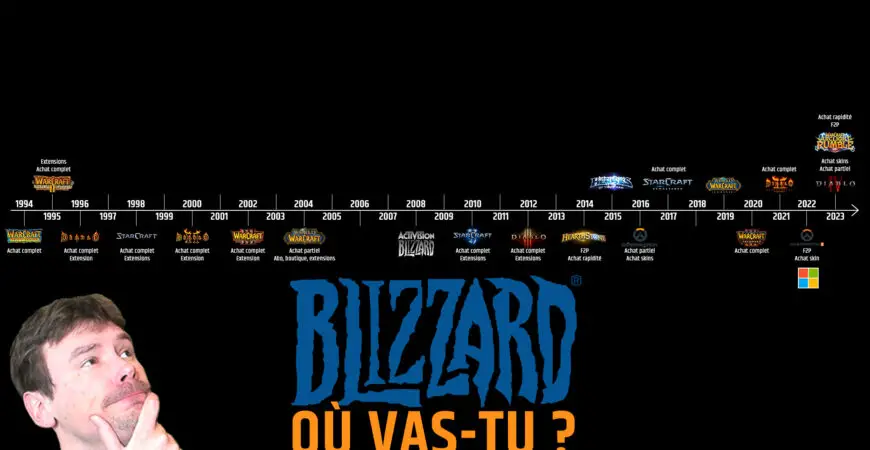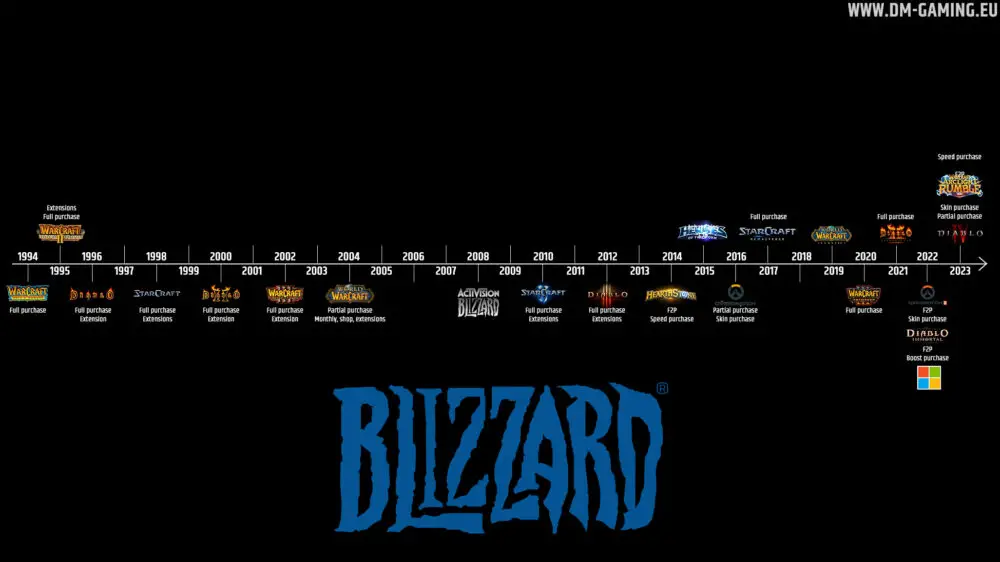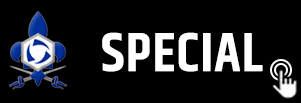
What is Blizzard Activision doing?! All the games and their economic models to understand where Blizzard is going!
- Blizzard, where are you going? The chronology of the games and their economic model: (00:00)
- Until 2012, classic models games extensions: (00:23)
- From 2012 to 2022 F2P remaster trending models: (01:29)
- Since 2022, aggressive models profitability: (01:57)
- What happens after 2023 :(02:48)
- In conclusion : (03:27)
- What do you think ? :(03:45)
- Don't forget to follow the channel, thank you! :(03:54)
- Blizzard, what's up? Games timeline with business model: (00:00)
- Up to 2012, classic game purchase and extensions: (00:23)
- From 2012 to 2022, trending models F2P remaster: (01:21)
- Since 2022, aggressive models maxing profitability: (01:50)
- What's coming after 2023: (02:33)
- In a nutshell: (03:24)
- What do you guys think about it? :(03:39)
- Don't forget to follow the channel, thanks! :(03:45)
Blizzard's classic first game
From 1994 to 2012, Blizzard followed a classic path, producing (revolutionary!) games and releasing expansions. In 2010, Blizzard announced Starcraft 2 in three installments, promising sustained play for a decade. For Diablo 3, it is finally an extension then a DLC instead of a second extension which will be chosen.
In all of this, one game stands out, it's of course World of Warcraft, being paid, with paid extensions, a paid subscription and an in-game store, hence its nickname "cash cow". However, the money raised is very well reused and the quality is there, which makes it one of the most popular games in the world over time.
The second part profitability of Blizzard
After 2012, the economic systems of Blizzard games have all changed. It is a few years after the merger with Activision, and even if it is complicated to make a direct link between their new economic systems, that Blizzard accentuates its models on profitability. They release their first Free to Play game with booster purchase and their FPS is paid for with cosmetics. It is also the launch of Heroes of the Storm, on a Free to Play economic model with cosmetics only. They stop the development and choose to use this model on Overwatch 2, with however a much more complicated accessibility to the skins. This second period also marks the era of remasters, with Starcraft, Wow Classic, Warcraft 3 and Diablo 2 being successful except for Warcraft Reforged. In addition, the mobile part is developing with the first stone in the Hearstone building as well as the console part, with for example Diablo 3 on consoles.
Blizzard's Third Party Profitability+
For 2022, Blizzard has offered even more aggressive economic models, except for Overwatch 2 which is spared. Whether it's Diablo Immortal, which allows you to boost your characters with money, or Diablo 4, which costs a small fortune to purchase and also allows you to buy skins, playing Blizzard games will no longer be within everyone's reach. world. A priori, Warcraft Arclight would be in the same economic style as Hearstone, to wonder if Blizzard wishes to make profitable the Diablo license which would be less so than the others.
What are the next Blizzard games in store for us?
To complete this analysis, there are two very important points to consider:
- it's a rare period when there is no announcement to expect from Blizzard on existing licenses, not Starcraft 3 or Warcraft 4 for example. It remains their survival game not announced to follow
- WoW's business model was never reused
- the Diablo fanbase of players to pay that we do not necessarily find on Overwatch
Complete timeline of Blizzard games
Here are all the games and their economic model, note that I start in 1994 by passing the old arcades:
- 1994 Warcraft 1, full purchase
- 1995 Warcraft 2, full purchase and expansion
- 1996 Diablo, full purchase and expansion
- 1998 Starcraft 1, full purchase and expansions
- 2000 Diablo 2, full purchase and expansion
- 2002 Warcraft 3, full purchase and expansion
- 2004 WoW, purchase, shop, expansion and monthly
- 2008 Activision Blizzard merger
- 2010 Starcraft 2, full purchases and expansions
- 2012 Diablo 3, full purchase, expansion and DLC
- 2014 Hearstone, F2P with speed boost
- 2015 Heroes of the Storm, F2P with cosmetics
- 2016 Overwatch, partial purchase with cosmetics
- 2017 Starcraft Remastered Full Purchase
- 2019 WoW Classic, purchase, shop and monthly
- 2020 Warcraft Reforged full buy
- 2021 Diablo 2 Resurrected, full purchase
- 2022 Proposed takeover by Microsoft
- 2022 Diablo Immortal, F2P with character boost
- 2022 Overwatch 2, F2P with cosmetics
- 2023 Diablo 4 partial purchase with cosmetics and battle passes
- 2023 Warcraft Arclight, F2P with speed boost
 The Blizzard Games Timeline
The Blizzard Games Timeline

In the end, Blizzard has done a lot of testing on its business models and the days of buying a full game for $40 are over. You will always have to spend a certain amount of money if you want a little more than the basic version, especially on Diablo licenses. It remains to be seen what the rest of their licenses have in store for us, even if the takeover by Microsoft will not greatly influence the release of licenses, a flat calm from 2024 seems to be coming.
By Alchemists, December 2022





